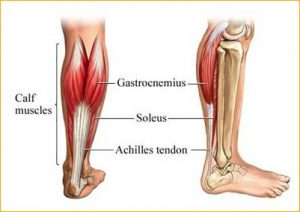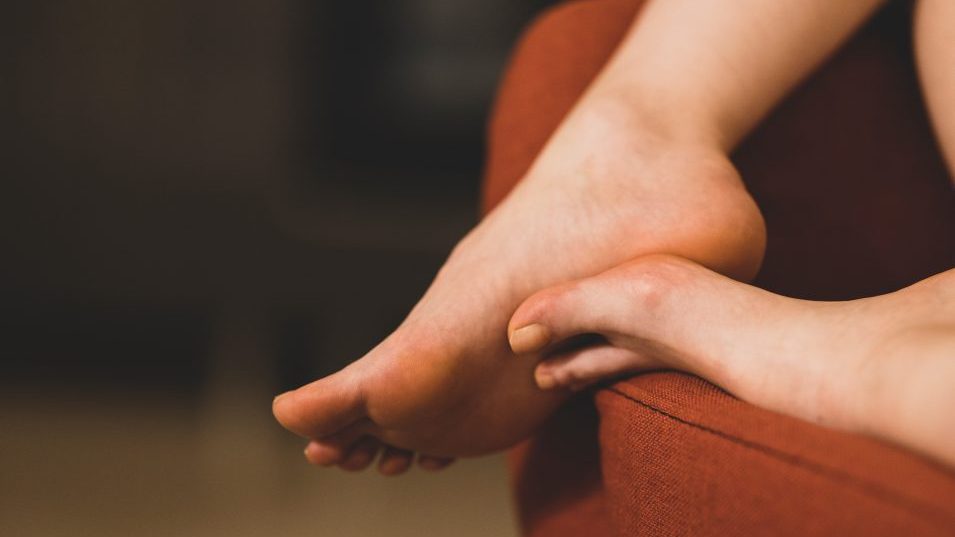Two muscles and one tendon can carry up to 4x the weight of your body.
The Achilles tendon, or calcaneal tendon, was named after the Greek warrior Achilles. According to legend, his mother attempted to make her infant son invincible by dunking him in the sacred waters of the River Styx. It seemed to have worked, except that she forgot to immerse the heel by which she held him. Ultimately, during the Trojan War, he was fatally wounded when an arrow penetrated his unprotected heel.
Although the term Achilles’ heel refers to a small yet fatal weakness, the Achilles tendon is far from being small or weak. Tendons are white fibrous (dense) cords of connective tissue that secure a muscle to a bone. There are several types of connective tissue and each have distinctive characteristics and unique functions to perform.
The Achilles tendon, specifically, is a thick rope-like structure that can be seen and felt just above the back of each ankle. With every step, each Achilles tendon (left and right), individually bears the entire weight of the body.
Although the lower leg consists of 13 muscles, only the two which merge together to form the Achilles tendon are considered calf muscles: the gastrocnemius (gas-trok-nee-mee-us) and the soleus (so-lee-us).
The gastrocnemius begins just above the back of the knee as does a supporting muscle called the plantaris. The plantaris is a tiny muscle compared to the other two, and yet it has the body’s longest tendon. It attaches to one side of the Achilles tendon before continuing down to the calcaneous (the heel bone). Crossing two joints, the knee and the heel, it allows the knee to bend and helps move the foot downward, as in pushing on a gas pedal.
The soleus, on the other hand, starts just below the back of the knee and it sits underneath the gastrocnemius. Because it only crosses the heel, via the Achilles tendon, the soleus moves the foot downward. Interestingly, the soleus is nicknamed the “second heart” because with each contraction it acts like a pump and pushes the blood supply back up to the heart.
The unique functions of the tendons and muscles of the calves and ankles allow us to stand, walk, run and jump. Changes in speed, terrain, and/or any extra weight being carried or pushed forces each tendon and muscle to handle up to 4 times the body’s weight!
Give your calves and ankles the attention that they deserve. Call today and schedule your next massage session. You’ll be glad you did!
About the Author:

Libby Winterhalter, licensed massage therapist (LMT), has been in private practice since July 2004. She graduated from SHI Integrative Medical Massage School, then located in Lebanon, Ohio. Prior to that, she received a Bachelor of Art’s degree in Communications along with a minor in Religious Studies from the College of Mount St. Joseph in 2001. Libby has also worked both in the corporate world and she served as a Journalist for the United States Navy for 22 years, from which she is now retired. She is an active member of the American Bodyworkers and Massage Professionals Association (ABMP).
Libby naturally blends both medical-based treatments and holistic therapies offering a more effective and comprehensive experience. Each session is specifically tailored to that client using one or more of the following techniques: therapeutic massage, Swedish (relaxation) massage, sports massage, Active Isolated Stretching – considered to be both a neuromuscular and myofascial release technique – Trigger Point Therapy, Craniosacral Therapy and more.
Libby has worked extensively with clients dealing with chronic pain, strains and sprains, compromised joints, spinal fusion(s), temporomandibular disorder, scar tissue, migraines, whiplash, digestive issues, plantar fasciitis and other foot-related pain, carpal tunnel syndrome, post-traumatic stress disorder, failure-to-thrive syndrome, pregnancy, cancers, amyotrophic lateral sclerosis (ALS, or Lou Gehrig’s Disease), sports-related injuries and severe injuries resulting from other accidents.
Thankfully, not all of Libby’s clients are facing life-altering issues. One client tells her she keeps him feeling younger than his years. Another client says Libby keeps her out of pain, while someone else tells her that she offers a necessary reprieve from the stressors of the world.
Libby is looking forward to expanding her practice and working with such an accomplished group of healthcare providers.

